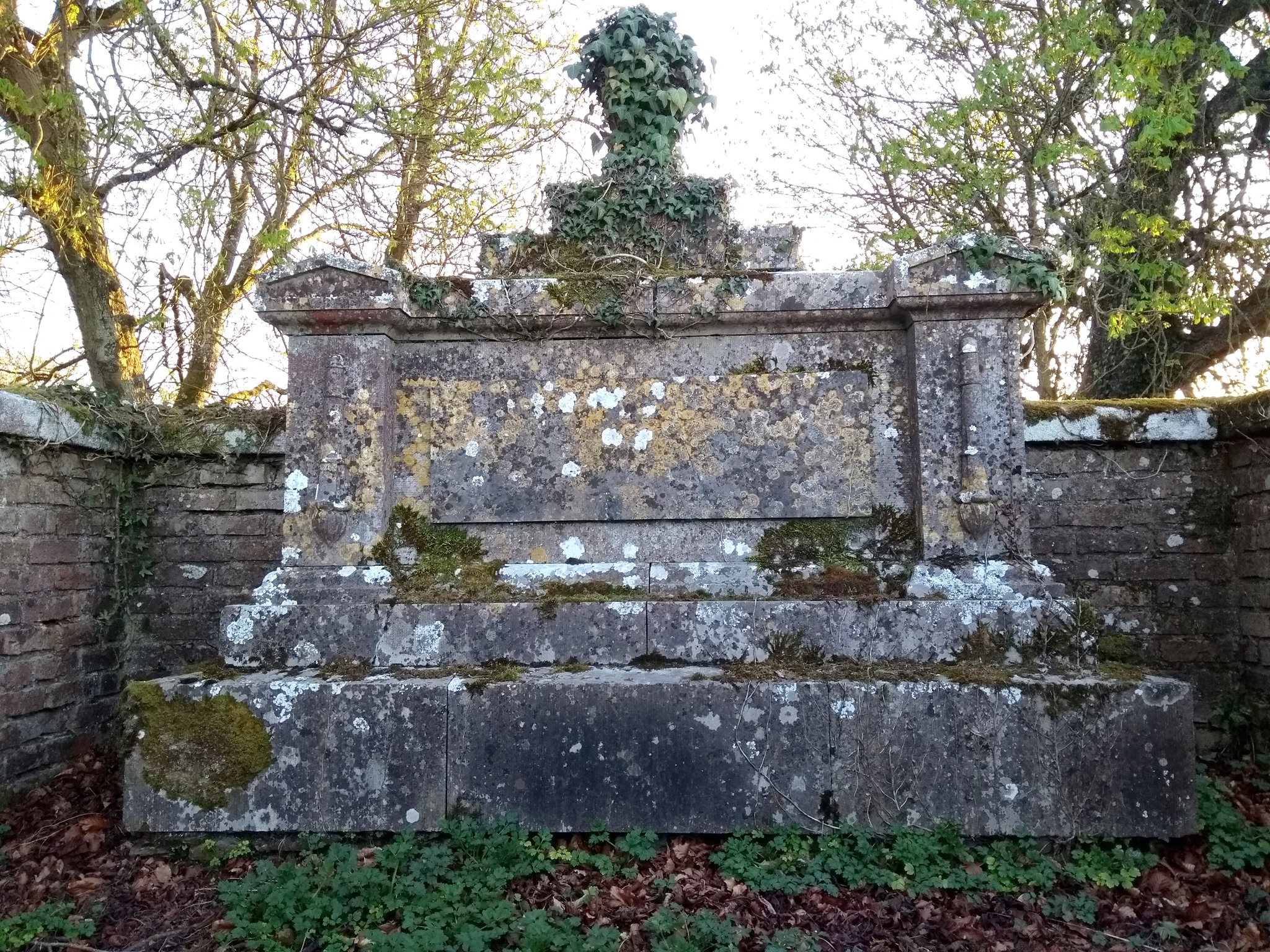 |
| Altar type headstone in New Abbey cemetery, Kilcullen. © Eugene Brennan |
Off topic again to local history. Does anyone know the history of this altar-style headstone in New Abbey Cemetery, with what I guess is neo-classical ornamentation (e.g. the urn as a finial on top and triangular pediments on top of the pillars)? I'm not sure whether "altar" is the correct term for the style and I've been doing reverse image searches on Google to see whether there's anything similar in existence, made by the same craftspeople. I seem to remember when I was around ten, the inscription was sort of legible. I can't remember ever having seen any reference to it by our local historians in The Bridge or elsewhere. Some rubbing with grass would probably bring up the contrast to allow the inscription to be read. If I ever see John Brady in the cemetery, I'll ask for permission. Climbing over the railings or wall might be necessary because the gate in the grave railings is stuck I think. Could it have been the altar from the parish church in the cemetery, repurposed as a gravestone for a member of the clergy? Meanwhile when the weather gets really dry during a drought, like now, a rectangular shape within which the grass dies appears nearby, on the opposite side of the path. I presume there's a flat slab-type tombstone just under the surface and the size and shape of the region of dead grass is similar to that of a grave slab lying some distance away. Sean Landers advised me not to start digging up the ground to see what's underneath (although I am curious!). I think it's sad to see centuries old graveyards where the grave markers belong to people long dead, with no living relatives. Maybe reading their names and thinking about them gives them a little recognition, before the inscriptions eventually erode into oblivion? Don't the people who are buried under that slab, if that's what it is, deserve to have their names revealed? Or is it better that they're forgotten?
